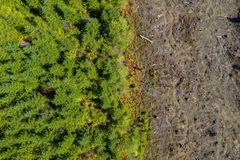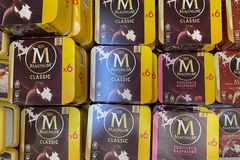
- Industry news
Industry news
- Category news
Category news
- Reports
- Key trends
- Multimedia
- Journal
- Events
- Suppliers
- Home
- Industry news
Industry news
- Category news
Category news
- Reports
- Key trends
- Multimedia
- Events
- Suppliers
Guatemala Coffee Atlas Fights Gourmet Beans Impostor

The atlas will define eight distinct coffee regions. Modeled on "appellations" used to distinguish fine wines, it would register each region to satisfy a gourmet market that wants to know exactly where and how coffee is grown.

24/11/06 Farmers from this lush valley between two Guatemalan volcanoes have made extra cash for years by pretending their coffee is from Antigua, a neighboring region famous for its chocolaty tasting beans.
"The intermediaries sell ripe coffee from Acatenango as if it is from Antigua. It's a problem all along the chain," said Luis Pedro Zelaya, president of the Genuine Antigua Coffee Growers Association (APCA).
Some 100,000 60-kg bags of coffee were sold as Antigua last year -- about double the 50,000 bags produced in the area around the famous Spanish colonial tourist town, APCA said.
Anacafe, Guatemala's grower association, is battling impostors, using satellite mapping, soil analysis and weather records to produce a "coffee atlas."
The atlas will define eight distinct coffee regions. Modeled on "appellations" used to distinguish fine wines, it would register each region to satisfy a gourmet market that wants to know exactly where and how coffee is grown.
Similar projects that have sprung up around Central America include the Tarrazu region in Costa Rica and the Selva Negra estate in Honduras. Guatemala's is the first program to divide an entire country according to coffee growing regions.
"If a buyer is interested in coffee from a specific region, we can say this farm exists, it produces this much and you can't sell more coffee than this area produces," said Anacafe president Jose Angel Lopez.
Antigua's valley floor between three volcanoes is 5,000 feet (1,524 meters) above sea level. The coffee growing region is one of Guatemala's oldest.
Its volcanic soil, low year-round humidity, shallow water table, sunny days and cool nights, help produce a coffee that cuppers say has a balanced body with pronounced acidity, a rich aroma and overtones of spice and chocolate.
Acatenango producers say their coffee, grown at similar altitudes in rich volcanic soil, can hold its own against beans grown in Antigua. Last week Anacafe inaugurated the Acatenango region to allow them to promote their beans separately.
"If you can create a demand for coffee from Acatenango, a market with higher prices, then maybe there will be less temptation to sell it as Antigua coffee," said Zelaya.
The goal is to market specialty coffee that can be sold at a premium. Antigua coffee sells at several cents per pound above the C-market price in New York.
Some wonder if buyer interest is sufficient to justify the hundreds of thousands of dollars spent on the project.
"The majority of roasters are not too concerned with these types of initiatives," said one Guatemalan exporter. "They are looking more at price. I don't think it will be that easy to sell the coffee. Only a few producers will benefit."










